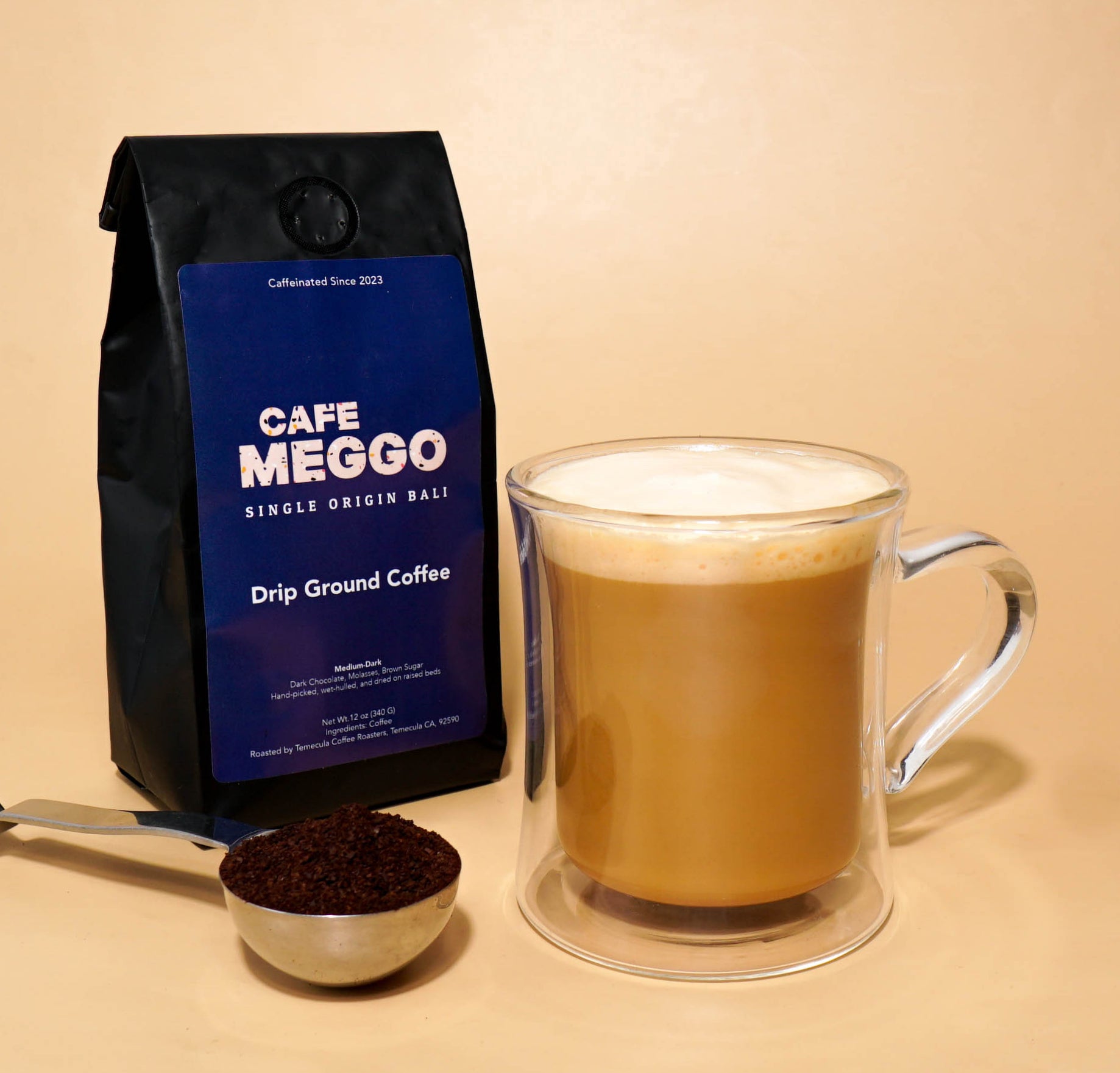Brewing Tips to Get the Best Out of SOE Single Origin Espresso
Brewing Tips to Get the Best Out of SOE Single Origin Espresso
Blog Article
Coffee Beans Uncovered: Discovering the Secrets of Coffee and Blended Coffee Beans
When you think of coffee, what comes to mind? Is it the abundant fragrance of coffee or the intricacy of a well-crafted mix? Comprehending the nuances of coffee beans can transform your experience. Each selection, from Arabica to Robusta, holds its very own keys. As you discover better, you'll reveal how these beans form tastes and effect sustainability. What might you find about your next cup?
The Origins of Coffee: A Historic Viewpoint
Although coffee is now a staple in coffee society worldwide, its origins trace back to the very early 20th century in Italy. You may be shocked to find out that the invention of espresso was driven by a wish for speed and effectiveness. In 1901, Luigi Bezzera patented the very first espresso device, aiming to make coffee faster than standard approaches. This advancement rapidly captured the focus of Italian coffee drinkers, leading to the espresso bars we recognize with today.
Understanding Coffee Beans: Attributes and varieties
When you assume about coffee, it's important to identify the different bean selections and their distinct tastes. Each kind brings an unique personality to your cup, affected by aspects like roast levels. Recognizing these elements can elevate your coffee experience significantly.
Coffee Bean Varieties
As you explore the world of espresso, you'll quickly discover that not all beans are produced equal; each range brings its very own distinct tastes and qualities to your cup. Arabica beans are understood for their smooth, nuanced flavors and reduced high levels of caffeine web content, making them a favorite amongst coffee lovers. Each selection supplies something various, so trying out will certainly help you locate your ideal espresso.
Taste Accounts Discussed
Understanding the flavor profiles of different espresso beans can elevate your coffee experience. Each bean range offers distinct features that influence taste, aroma, and mouthfeel. As an example, Arabica beans typically provide a sweeter, a lot more complicated flavor with hints of fruit and flower notes, while Robusta beans have a tendency to be bolder, with earthy and nutty touches.
When you explore single-origin beans, you could find distinct local flavors-- Main American beans may be brilliant and citrusy, whereas Italian blends frequently supply abundant, chocolatey notes.
Roast Levels Effect
Roast levels play a crucial function in shaping the flavor and fragrance of espresso beans, influencing your overall coffee experience. Comprehending these roast degrees aids you choose the espresso that suits your preference choices. Exploring with various roasts can lead to fascinating discoveries, improving your recognition for espresso.
The Art of Blending: What Makes Blended Coffee Unique
What makes combined coffee so remarkable? You can experiment with different combinations to improve level of acidity, sweetness, and body, resulting in a brew that's richer and extra intricate than a single-origin coffee.
Blending additionally permits you to provide to varied taste preferences. You can craft a blend that's smooth and mellow or one that's strong and durable, depending upon your audience. And also, blending can aid maintain uniformity, using a reliable taste experience despite seasonal variants in beans. So, whether you're a home or a barista maker, grasping the art of mixing opens up a globe of imagination and flavor opportunities, making your coffee experience truly distinct - SOE.
Flavor Accounts: Sampling Notes of Espresso vs. Blended Coffee
Blended coffee provides a world of flavor possibilities, however when it comes to coffee, you're looking at an extra focused experience. Coffee typically showcases vibrant, rich flavors with a thicker mouthfeel.
On the other hand, mixed coffee offers a complex tapestry of flavors. You can explore a variety of tasting notes, from nutty and pleasant to flower and fruity. Each mix can supply something unique, usually incorporating beans from various areas to produce a balanced profile.
While coffee delivers a strike, combined coffee welcomes you to enjoy the nuances. Whether you choose the durable stamina of espresso or the elaborate flavors of blended coffee, each cup informs its own tale, waiting on you to find.
Brewing Techniques: Perfecting Your Espresso Shot
To accomplish the excellent coffee shot, recognizing the brewing methods is important, as even minor adjustments can greatly impact the taste and high quality. Begin by utilizing fresh, premium coffee beans; grind them simply prior to brewing for optimum taste. Objective for a great grind, concerning the uniformity of salt, to assure perfect removal.
Next, focus on your water temperature; it ought to be in between 195 ° F to 205 ° F. Too too cool or hot can destroy your shot. Usage concerning 18-20 grams of coffee for a double shot, and tamp it equally with strong pressure to develop an uniform puck.
Ultimately, control your extraction time; objective for 25-30 secs. A longer extraction can bring about resentment, while too brief can result in sour tastes. Practice these strategies consistently, and you'll improve your skills, attaining that rich, robust coffee shot you hunger for. Take pleasure in the trip!
The Function of Roast Degrees in Coffee and Blended Coffee
After grasping the developing methods for espresso, it's time to consider how roast levels affect the taste account of your coffee. The roast degree can significantly modify your coffee's preference, fragrance, and body. Light roasts often tend to highlight the coffee's origin, using intense level of acidity and fruity notes, while medium roasts balance acidity and sweetness, producing a well-shaped taste. Dark roasts, on the other hand, highlight vibrant, abundant tastes with reduced acidity, commonly generating chocolate or great smoky undertones.

Discovering Sustainability: Moral Sourcing of Coffee Beans
When you pick coffee, you're not simply picking a flavor; you're choosing about the effect on farmers and the environment. Understanding Fair Profession practices, chemical-free farming approaches, and accreditation standards can assist you sustain sustainable coffee sourcing. Allow's discover just how these aspects add to a much more ethical coffee experience.
Fair Trade Practices
Fair Profession techniques play an important function in making sure that coffee beans are sourced morally and sustainably. When you choose Fair Trade coffee, you sustain farmers that get fair wages and work in safe problems. By deciding for Fair Profession brand names, you're not just enjoying an abundant mug of coffee; you're making a favorable impact on the lives of those who expand it.
Organic Farming Approaches
As you discover the globe of honest coffee sourcing, organic farming approaches emerge as an essential component of sustainability. Furthermore, it frequently leads to more powerful, much healthier coffee SOE plants, resulting in richer tastes in your cup. When you choose for natural coffee, you're making a conscious choice that benefits both the world and your taste buds.
Qualification Requirements Explained
Recognizing qualification criteria is important for any individual curious about ethically sourced coffee. These requirements, such as Fair Trade, Rainforest Partnership, and USDA Organic, assurance that coffee is expanded under lasting methods. When you choose certified coffee, you sustain farmers who follow moral labor methods and environmental protection.
Fair Trade qualification focuses on supplying reasonable incomes and functioning conditions, while Rainforest Alliance highlights biodiversity and community preservation. Following time you're at your local café or grocery store, look for these labels, and feel great understanding your coffee purchase favorably affects neighborhoods and the setting.
Regularly Asked Concerns


How Does Elevation Influence the Development of Coffee Beans?
Altitude effects coffee bean development by affecting temperature and environment. Higher altitudes frequently produce denser beans with more complex flavors, while reduced elevations can result in faster development but much less tasty results. You'll taste the difference!
What's the Difference In Between Arabica and Robusta Beans?
Arabica beans are sweeter and much more complex, while Robusta beans have a more powerful, harsher flavor with greater caffeine content. You'll find Arabica liked for specialty coffees, whereas Robusta's typically utilized in instantaneous coffee and espresso blends.
Can Coffee Beans Go Negative or Lose Taste In Time?
Yes, coffee beans can go negative and shed flavor in time. They'll come to be stagnant if you keep them improperly or maintain them also long. Constantly maintain your beans in a closed container far from light and moisture.
What Are the Health Conveniences of Drinking Espresso?
Consuming alcohol coffee boosts your power, enhances mental clarity, and may reduce the threat of specific diseases. It's abundant in antioxidants, sustains metabolic rate, and can boost mood, making it a helpful selection for your everyday routine.
Just How Does Water Top Quality Influence Espresso Removal?
Water top quality substantially influences coffee extraction. It influences the solubility of tastes and oils, affecting taste and fragrance. Using filtered water can improve your espresso, making certain a enjoyable and balanced cup every time you make.
Coffee Beans Uncovered: Uncovering the Keys of Espresso and Blended Coffee Beans.
Recognizing the flavor profiles of different espresso beans can elevate your coffee experience.Roast degrees play a vital function in forming the flavor and fragrance of espresso beans, affecting your total coffee experience (SOE).Blended coffee provides a world of flavor possibilities, but when it comes to coffee, you're looking at a more focused experience.After mastering the developing strategies for espresso, it's time to consider exactly how roast degrees influence the taste profile of your coffee
Report this page